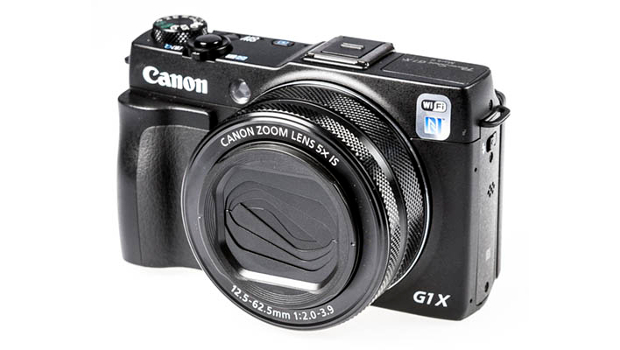Irrespective of the advent of digital imaging technology, the core principle of choosing a camera remains the same — buy the camera that has the best lens in front of it. Well that old axiom can be applied in many different ways, as one can be assured Canon do not make bad lenses, but what technology, and packaging, advances has allowed the company to do is to create packages of widely varying capability, including the lens, to suit all tastes and capabilities.
Personally, I love shooting with a DSLR, but I also know that, deep down, I’ll never really push the limits of such beasts. As well as that, lugging around the camera and at least two lenses can be a pain at best. Hence when the PowerShot G1 was introduced originally, it was something of a surprise, with all the power and capability of a DSLR, but in a compact format. The G1 X moved things along even further and though well received at the time, it also got a few criticisms in terms of functionality and features. Canon has now thoughtfully upgraded and improved the G1 X and the current G1 X is the Mark II.
The basic specs are as follows: Type 1.5 (18.7 x 14mm) CMOS sensor, capturing 12.8 megapixel images and full HD videos. The lens is an f/2-3.9, 24mm 5x zoom item with a 9-bladed aperture. Processing is via a DIGIC 6 processor, allowing good low light performance, with HS System and max ISO of 12,800, with intelligent IS image stabilisation that guards against camera shake.
There is 31-point AiAF, with precise manual focusing with Manual Focus Peaking. The lens housing features customisable Dual Control Rings, backed up by an intuitive touch screen, though there is no manual view finder. There is also Wi-Fi and Image Sync for easy image sharing and back-up. There is easy connection to a smart phone or tablet for remote shooting too. There is optional EVF for traditional handling, and 14 bit RAW and DPP software that integrates seamlessly into any workflow.
The camera is reassuringly weighty, and feels like a proper camera, with a very high build quality, from the pop out flash, to the multi-position view screen and the multi-selector thumbwheel control and button cluster. While some have criticised the weight (558g), the addition of a right side grip on the front of the camera means that it is easily held and allows a firm grip. The usual zoom and focus rings on the lens, depending on the mode, also function as menu selection devices to switch easily between sub-menus in the given shooting mode.
It is not immediately obvious whether it is a happy coincidence or a design feature, but pop out flash is on a fully articulated arm which means that one can easily point it up or down through its range of rotation, holding it in place with your finger while you shoot. While a hot shoe is provided, this simple manipulation allows you to control the flash or bounce it around as needed, further increasing the flexibility of the G1 X II.
Now, we are not really set up to do exhaustive sample image comparisons and dissections but on the first day of use, the G1 X II was thrown into the heat of battle and used to take photos at a press conference. Apart from taking a minute to find the release for the stowed flash, all controls fell easily to hand, allowing switching between full auto, portrait mode and high speed shooting for action. The low light performance was also tested, as images on screens were shot in less than ideal conditions.
All images proved sharp and well defined, even in low light and full auto mode. Outside shots of high speed motorsport were equally vivid and pin sharp. Only high digital zoom produced notable defects effects, but even these were minimal.
Overall, the G1 X II is a superb device that easily brings users the capability of a DSLR in a compact format. The camera can provide all the capability of a DSLR across such abroad range of conditions and modes that only someone who is knocking on pro needs will find any real shortcomings.
While it is not light, and it is not as compact as some rivals, this is for a reason. The very large sensor which works in conjunction with that wonderful lens to deliver such incredible images needs the room to be packaged properly. The weight and size are easily gotten used to and again, give a reassuring heft and quality feel that combines to remind you that you are using a near professional quality tool. The only other criticism is that it is expensive at €899, even in comparison to some basic DSLR kits. However, that said, to get the same level of flexibility from a DSLR, you may need three lenses and a battery pack.
The bottom line on the G1 X Mark II is that it would be difficult to get more capability and image quality in anything smaller or lighter. In light of this, it is easily one of, if not the, best camera in this segment.
Paul Hearns







Subscribers 0
Fans 0
Followers 0
Followers